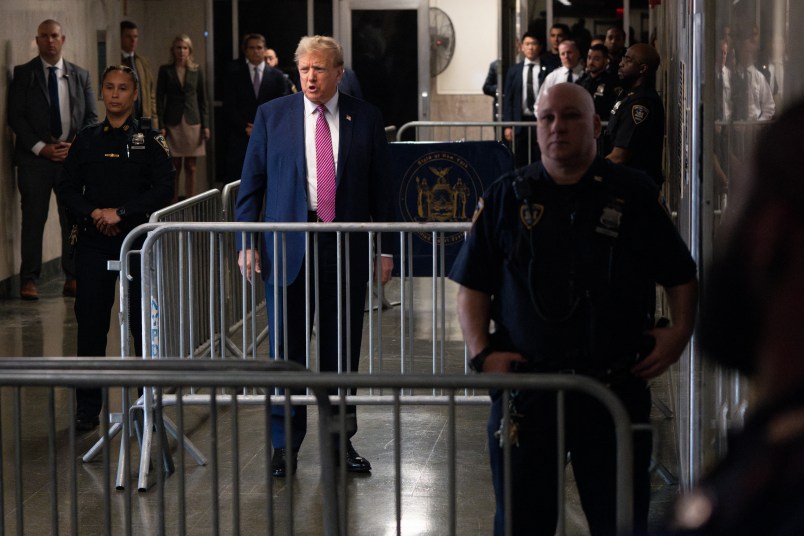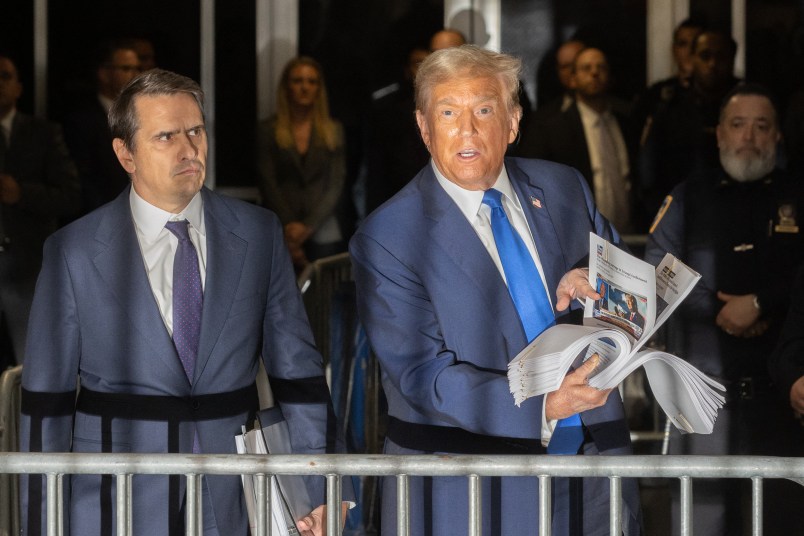The U.S. Supreme Court just sidelined Wisconsin’s highest court and delivered a significant win for Wisconsin Republicans, who were trying to throw out a state legislative map that included a new majority-Black district.
Justices Sonya Sotomayor and Elena Kagan, the lone dissenters Wednesday, called the Court’s action “unprecedented” and said it should have let the legal conflict play out at the state level, “rather than further complicating these proceedings with legal confusion through a summary reversal.”
The maps overturned Wednesday, which were adopted by the state Supreme Court earlier this month, disproportionately favored Republicans. But that wasn’t enough for Republican state legislators, who appealed the state Court’s ruling on an emergency basis to the U.S. Supreme Court.
The decision Wednesday was the first time this year that the high Court used its “shadow docket” — that is, decisions made on an emergency basis, rather than after hearing oral arguments from both sides — to throw out a redistricting map based on a Voting Rights Act argument, Democracy Docket noted.
In effect, the decision erases the conservative state Supreme Court’s decision to side with legislative maps drawn by Wisconsin’s Democratic governor, and sends the case back to the state Supreme Court to be decided again, offering fresh hope for Republicans.
Fight Centers On New Majority-Black District Opposed By Republicans
The fight in Wisconsin has been raging for months: Last year, the Republican-controlled legislature and the Democratic governor, Tony Evers, reached an impasse on the new maps for the state legislature, and the fight went to the state’s Supreme Court.
And in November, the conservative-majority state Court made a significant decision that was ostensibly in state Republicans’ favor, ruling that they would pursue a “least changes” version of the map signed into law a decade ago by then-Gov. Scott Walker (R) — which was heavily slanted for Republicans.
In another ruling earlier this month, when the Court sided with Evers’ proposed state legislative maps, that was the crucial context: The Evers maps best conformed with the state Court’s “least changes” criteria, the Court’s majority found. Under Evers’ map, even in a statewide tie election, Democrats would still likely only win 38 out of 99 seats in the state Assembly and 11 out of 33 seats in the state Senate, according to one analysis flagged by Wisconsin Public Radio.
Conservative state Supreme Court Justice Brian Hagedorn, in an opinion siding with the Court’s three liberals, wrote that “there are good reasons to believe a seventh majority-Black district is needed.”
But Republicans in the Wisconsin legislature complained that Evers had improperly drawn the seventh majority-Black Assembly district, calling it a “21st-century racial gerrymander” even though their own proposed map reduced the number of majority-Black districts from six to five.
They went to the U.S. Supreme Court. And on Wednesday, they got what they wanted.
“We agree that the court committed legal error in its application of decisions of this Court regarding the relationship between the constitutional guarantee of equal protection and the [Voting Rights Act],” the court’s majority wrote in an unsigned opinion, reversing the imposition of the governor’s maps and returning the case to the state’s Supreme Court to be decided again.
The U.S. Supreme Court’s majority added later that the state Supreme Court “improperly relied on generalizations” to conclude that seven majority-Black districts could be drawn, and that it failed to say whether a “race-neutral alternative” that didn’t add a seventh majority-Black district would have denied Black voters equal political opportunity.
The U.S. Supreme Court’s order came on what’s known as the “shadow docket” — that is, a response to an emergency application from the Wisconsin legislature Republicans, rather than the result of the Court hearing oral arguments from both sides, as it normally does.
In a dissent authored by Sotomayor and joined by Kagan, Sotomayor wrote that summary reversals like the Court’s order on Wednesday are typically reserved for decisions on violations of settled law — whereas the current circumstance involves legal precedents that are “hazy at best” and “uncertain.”
Calling the decision “unprecedented,” the dissenting justices noted that the state Supreme Court had preserved the possibility that an appropriate plaintiff — such as a Black voter in one of the affected Wisconsin districts — could pursue a Voting Rights Act lawsuit over Evers’ maps.
“This Court’s intervention today is not only extraordinary but also unnecessary,” the dissenters said.
SCOTUS Uneven On Redistricting This Year
Wednesday’s order comes after an uneven record from the nation’s highest court on redistricting cases this year.
In February, the U.S. Supreme Court halted a lower federal court’s ruling that Alabama’s congressional maps were racially discriminatory and needed to be withdrawn — again via the “shadow docket.” Justice Brett Kavanaugh wrote at the time that “late judicial tinkering with election laws can lead to disruption and to unanticipated and unfair consequences for candidates, political parties, and voters, among others.”
Perhaps smelling blood in the water, Republicans in Pennsylvania and North Carolina brought their own redistricting gripes to the high Court, hoping that they could win there where they had lost with their state Supreme Courts. But the U.S. Supreme Court denied both requests.
On Wednesday as well, the high Court also denied a request to intervene in the fight over U.S. congressional maps in Wisconsin — rather than state legislative maps, the subject of the Court’s shadow docket order — brought by the state’s Republican members of Congress.
“So, to sum up: the Court used a case in an emergency procedural posture to reach out and decide an issue that could have waited for full briefing and argument either in a lower court in a challenge to the maps or if the Supreme Court had set the case for argument,” the election law scholar Rick Hasen wrote.
“It decided these issues in ways hostile to minority voting rights without giving a full opportunity for airing out the issues and pointing out how this will further hurt voters of color. It continues to chip away at the Voting Rights Act without acknowledging that it is killing off the last major protection for minority voters from discriminatory districting plans.”
Sen. Amy Klobuchar (D-MN), speaking during Judge Ketanji Brown Jackson’s Supreme Court confirmation hearing Wednesday, said the Court’s increasing practice of using the shadow docket to decide important cases, including those addressing voting rights, was “incredibly troubling.”










